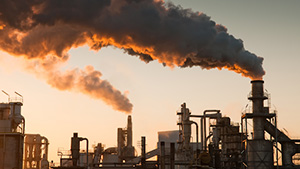
Research in recent years has increasingly spotlighted the role of air pollution as a leading contributor to deaths globally. In fact, State of Global Air went as far as to say, “Air pollution was estimated to be the 4th leading contributor to human deaths in 2019, contributing to approximately 7 million deaths worldwide.”
While there are certainly significant costs to many industries to control air pollution, air pollution still causes major economic costs each year despite the spending. The tremendous annual toll on human health and substantial economic impacts indicate that it would be wise to spend more on air pollution prevention and control, globally, assuming the prudent application of the spending.
The following are four examples of annual health and economic impacts of air pollution:
1. Increased Premature Deaths
According to the World Health Organization (WHO), the combined effects of ambient air pollution and household air pollution are associated with 6.7 million premature deaths annually. The health effects of air pollution are numerous and include respiratory problems, cardiovascular disease, and cancer.
2. Higher Healthcare Costs
The increase in medical problems has led to higher healthcare costs and an increased burden on healthcare systems around the world. In 2019, the Global Alliance on Health and Pollution estimated that the cost of pollution-related deaths and illnesses worldwide was approximately $4.6 trillion, or 6.2% of global economic output. These costs include direct healthcare expenses and the value of lives lost prematurely.
3. Negative Impact on Labor Market
Air pollution-related illnesses can result in increased absenteeism, reduced productivity, and higher healthcare costs for workers and employers. One study by the World Bank and the Institute for Health Metrics and Evaluation (IHME) estimated that the cost of lost labor income due to premature deaths from air pollution was $225 billion globally in 2013.
4. Decreased Agricultural Yields
Air pollution affects the agriculture sector by reducing crop yields and food security. Ozone and nitrogen dioxide, two of the most common air pollutants, are known to damage plants and reduce their growth. Research from Stanford University shows crop yields could increase by about 25% in China and up to 10% in other parts of the world if emissions of nitrogen oxides, common air pollutants, decreased by about half.
APC Develops Air Pollution Systems That Address Your Needs
Many facility managers do not have the engineering staff to sort through various options of air pollution control products and end up installing equipment that is inadequate, inefficient, or high maintenance. APC is known as a trusted solution source, supporting industrial customers and municipalities in meeting their air pollution control needs economically. Our team develops multiple air pollution control technology options for a single application whenever possible, including the most difficult air pollution control challenges, to provide the most effective and efficient solution for each application.
You can count on APC Technologies Inc. (APC) as a leading supplier of air pollution control products to assist you in meeting your specific application.

